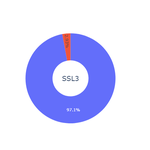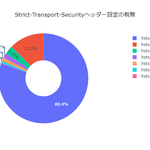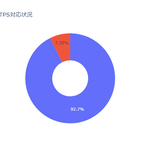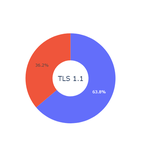Why Do People Fall for Phishing Scams? The Invisible Gorilla Experiment and How Your Mind Is Hacked
Nov. 15, 2024
Phishing scams prey on cognitive biases, deliberately disrupting rational decision-making. This article explores the psychological mechanisms behind these scams, highlights lessons from the "Invisible Gorilla Experiment," and offers actionable strategies to protect yourself
- 1. The Psychological Tricks Behind Phishing Scams
- 2. The Art of Emotional Manipulation
- 3. Psychological Mechanisms at Play
- 4. Countermeasures: Building Rational Decision-Making Skills
- 5. Leveraging Metacognition to Resist Emotional Manipulation
- 6. A Practical Checklist for Identifying Phishing Scams
- 7. Conclusion: Strengthen Your Ability to Detect Scams
Table of Contents
1. The Psychological Tricks Behind Phishing Scams
The Trap of Selective Attention
One of the reasons phishing scams succeed is their ability to exploit "selective attention," a cognitive phenomenon where focus on one task leads to blindness to other information. A famous example illustrating this is the Invisible Gorilla Experiment.
Watch the video below and count the number of passes made by players in white shirts:
Did you notice the gorilla?
The Invisible Gorilla Experiment: Background and Results
Conducted in 1999 by psychologists Daniel Simons and Christopher Chabris, this experiment highlights how selective attention limits human perception. Participants were asked to count the number of passes made by people in white shirts, a task requiring intense focus. During the task, a person in a gorilla suit walked into the frame, beat their chest, and exited.
Surprisingly, nearly half of the participants completely missed the gorilla.
Why?
Selective attention narrows our focus, causing us to filter out even obvious information. This phenomenon, known as inattentional blindness, demonstrates how humans fail to perceive stimuli not aligned with their immediate focus.
Relevance to Phishing Scams
The mechanisms of this experiment provide valuable insights into how phishing scams manipulate attention. Phishing emails often contain messages designed to evoke a sense of urgency or fear, such as:
"Your account will be frozen within 48 hours."
"You have an unpaid fine. Take action immediately."
These messages focus the victim’s attention on specific instructions or links, diverting their awareness from critical details such as suspicious URLs or unofficial sender addresses.
This phenomenon mirrors the "Invisible Gorilla Experiment," where participants fail to notice the gorilla because their attention is directed elsewhere. Similarly, phishing scams exploit "attentional blind spots," obscuring their fraudulent intent and any clues pointing to deceit.
Although phishing emails are riddled with inconsistencies—unusual details, mismatched URLs, or other discrepancies—these are often overlooked under the cognitive strain caused by fear and urgency. While in a calm state, individuals might easily recognize these red flags, the emotional manipulation creates a situation akin to the experiment: the victim, overwhelmed by the task at hand, fails to notice the proverbial "gorilla."
Educating individuals to recognize these inconsistencies is undeniably critical and forms the foundation for prevention. However, this approach has limitations when applied in real-time, where victims are caught in the midst of the scam. Just as participants would easily spot the gorilla if they were told in advance, "A gorilla will pass through the scene," they might still miss it if they were instructed instead, "Count the passes made by players in white shirts, and you will lose points for any mistakes."
In essence, phishing emails deliberately create "attentional blind spots," steering victims into a state where rational judgment is impaired. This manipulation of attention and emotion lies at the core of phishing scams.
2. The Art of Emotional Manipulation
Phishing scams heavily rely on manipulating victims' emotions to cloud their judgment. Below are common examples of psychological tactics used in such scams:
Creating a Sense of Urgency
"Your account will be frozen unless immediate action is taken."
"Failure to respond may result in legal action."
Feigning Reassurance
"This is official support. Please log in here."
"For your safety, please respond immediately."
The Dual Strategy of Fear and Reassurance
Scammers simultaneously induce anxiety by presenting alarming threats and then offer an immediate solution, such as a link or specific action, to resolve the issue. This combination effectively leads the target into the trap by exploiting their emotional vulnerability.
3. Psychological Mechanisms at Play
Several psychological biases make phishing scams particularly effective:
Loss Aversion Bias
Threats such as "Your account will be locked" or "Your funds will be lost" exploit the human instinct to avoid loss at all costs. This fear overrides rational decision-making, making individuals more susceptible to manipulation.
Fear of Losing Freedom
When phishing messages reference "legal action" or a (false) "arrest warrant," they evoke a deep fear of losing physical or financial freedom. This fear drives impulsive actions to avoid perceived consequences.
Framing Effect
By presenting information from a narrowly focused perspective, phishing messages prevent victims from considering alternative solutions, such as verifying claims through official channels. This cognitive narrowing traps victims into following the scammer's instructions.
4. Countermeasures: Building Rational Decision-Making Skills
Phishing scams represent a form of cognitive warfare. To counter these psychological traps, consider the following steps:
Step 1: Regain Calm
When faced with alarming messages, pause and ask, "Why am I being rushed?" Cultivating a habit of stepping back is crucial.
Step 2: Analyze the Bigger Picture
Reflect on the message’s intent:
- "Is my account truly at risk?"
- "Can I verify this claim directly through official channels?"
Step 3: Act Deliberately
Avoid clicking on links within emails. Instead, visit the official website directly or contact verified customer support to confirm the legitimacy of the message.
5. Leveraging Metacognition to Resist Emotional Manipulation
The core of phishing scams lies in emotional manipulation. Defending against such tactics requires developing metacognitive awareness—the ability to objectively evaluate your emotions and reactions.
How to Practice Metacognition
- Observe Your Emotions: Ask, "Why am I feeling anxious or rushed?"
- Take a Timeout: Allow at least 5 minutes before acting.
- Consider a Third-Person Perspective: Think about how you would advise a friend facing the same situation.
A Word of Caution
In the age of Generative AI, phishing emails are becoming increasingly sophisticated. This makes it more critical than ever to avoid immediate actions based on emotional responses. Taking a moment to reflect and distance yourself from the urgency of the message is one of the most effective defenses against scams.
6. A Practical Checklist for Identifying Phishing Scams
When in doubt, use the following checklist:
- Verify the Sender’s Address: Is it from a legitimate domain?
- Watch for Urgency: Does the message pressure you to act quickly?
Inspect Links: Do they match the official website’s URL?
7. Conclusion: Strengthen Your Ability to Detect Scams
As the Invisible Gorilla Experiment shows, humans often miss critical information when focused on specific tasks. Phishing scams exploit this attentional blind spot by combining cognitive distractions with emotional triggers.
Key Takeaways:
- Develop a habit of questioning why you feel rushed or anxious.
- Analyze emails critically and focus on details.
- Always rely on official channels or trusted sources to verify claims.
Rational decision-making and metacognitive awareness are your strongest defenses against phishing scams.
Need Assistance? Contact ImprovedMove Co. Ltd.
If you want to prevent phishing fraud or need support after falling victim, consult the experts at ImprovedMove Co. Ltd.
We offer comprehensive phishing countermeasures, including phishing site takedown services, to safeguard your security with swift and reliable solutions.
→ Contact us now for immediate assistance.








